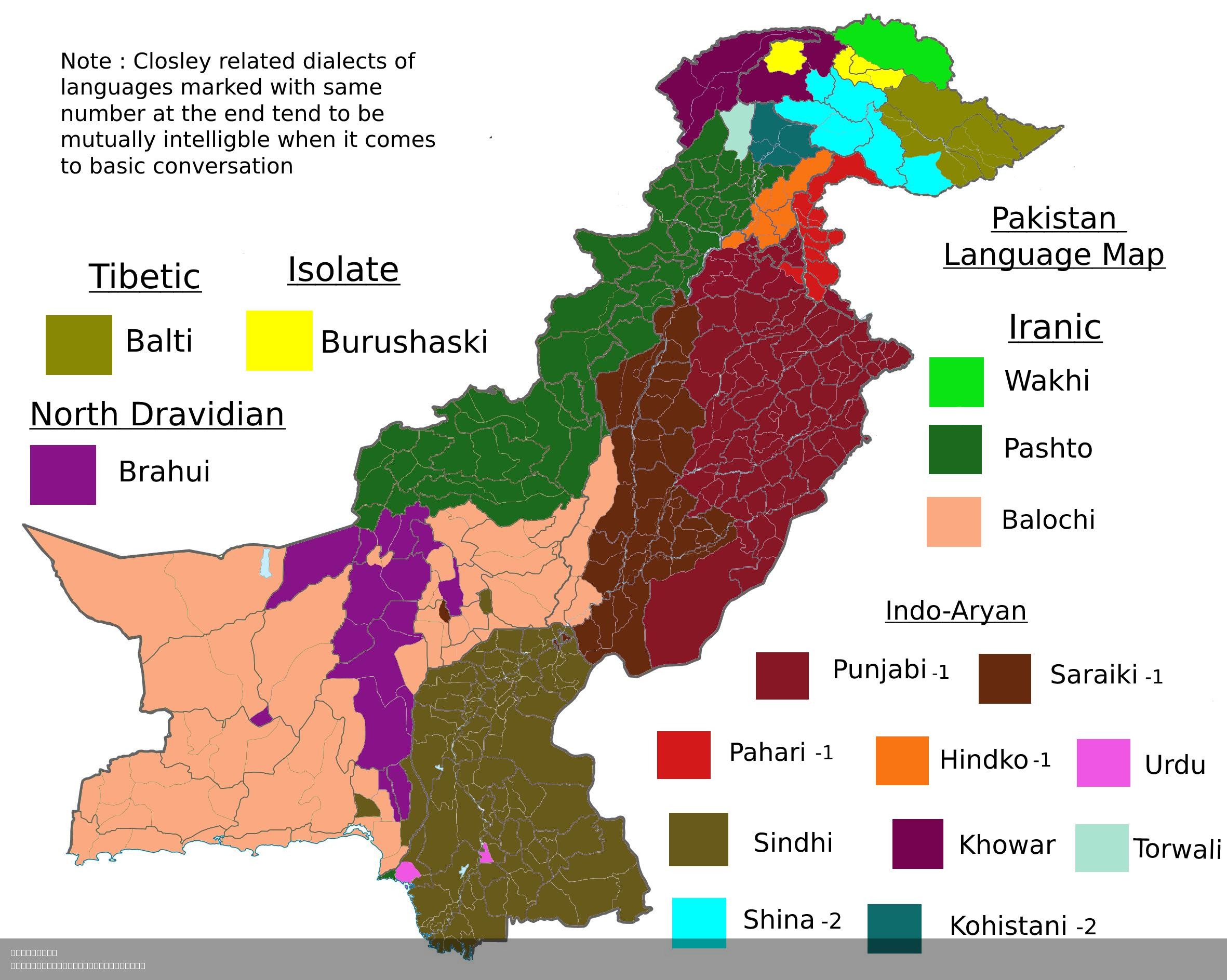Pakistan Language Map


David Chen
Data Visualization Specialist
David Chen is an expert in transforming complex geographic datasets into compelling visual narratives. He combines his background in computer science ...
Geographic Analysis
What This Map Shows
The 'Pakistan Language Map' provides a detailed visualization of the linguistic diversity across the country. It highlights the various languages spoken in different regions, illustrating how Pakistan's rich cultural tapestry is woven through its languages. As you analyze this map, you can see that Pakistan is home to a multitude of languages, each representing unique ethnic backgrounds and historical narratives.
Deep Dive into Languages in Pakistan
Pakistan's linguistic landscape is incredibly diverse, with over 70 languages spoken within its borders. The most widely spoken language is Punjabi, primarily found in the Punjab province, where approximately 44% of the population communicates in this language. Interestingly, the dominance of Punjabi reflects both historical and cultural influences that have shaped this region over centuries.
Following Punjabi, Urdu serves as the national language and is understood and spoken by a significant portion of the population. While it is not the first language for most, its role as a lingua franca is vital in unifying the diverse ethnic groups across Pakistan. In urban centers like Karachi, the presence of Urdu is particularly pronounced, as it acts as a bridge between various regional languages.
Another major language is Sindhi, predominantly spoken in Sindh province, where about 14% of the population uses it as their primary means of communication. The cultural significance of Sindhi is profound, with a rich literary history that includes poetry and folk tales that reflect the region's traditions.
Pashto, spoken primarily in Khyber Pakhtunkhwa and parts of Balochistan, is another critical language, representing around 15% of the population. It's fascinating to note that Pashto has a strong oral tradition, and its poetry and storytelling have been passed down through generations, showcasing the cultural resilience of the Pashtun people.
Balochi, the language of Balochistan, is also noteworthy, though it has fewer speakers compared to the aforementioned languages. The Baloch people have a rich history linked to their language, and it plays a crucial role in their identity.
Interestingly, there are several other regional languages, including Saraiki, English, and various dialects like Brahui and Shina, which further reflect the country’s linguistic richness. This linguistic diversity is not merely a matter of communication; it encapsulates the identity, culture, and history of the people who speak these languages.
Regional Analysis
Examining the Pakistan Language Map reveals significant regional variations in language distribution. In Punjab, the dominance of Punjabi is evident, with the language being the primary medium of education and communication. The region's culture, festivals, and traditions are deeply rooted in the Punjabi language, making it a cornerstone of Punjabi identity.
In Sindh, the prevalence of Sindhi contrasts sharply with the linguistic landscape of Punjab. The Sindhi language has a rich literary tradition, and its speakers often take pride in their distinct cultural heritage, which includes unique music and folklore. The urban centers in Sindh, particularly Karachi, showcase a blend of languages due to the city's status as a melting pot of cultures.
Khyber Pakhtunkhwa presents a different picture with Pashto being the majority language. The influence of Pashto is not only in daily communication but also in the arts and media within the region. The Pashtun culture emphasizes oral storytelling, which plays a vital role in preserving their history and traditions.
In Balochistan, Balochi is the primary language, but the province's linguistic diversity is notable with the presence of several dialects and languages. The Baloch people maintain a strong connection to their language, which is a crucial aspect of their cultural identity.
Significance and Impact
The significance of understanding Pakistan's language map extends beyond mere statistics; it reflects the country's identity. Language plays a vital role in social cohesion and cultural preservation. As globalization continues to influence local cultures, the preservation of languages becomes essential. Many regional languages are at risk of extinction, which raises questions about cultural heritage and identity.
Moreover, the linguistic diversity impacts education, governance, and social integration in Pakistan. Language policies can either promote unity or exacerbate divisions, making it crucial for policymakers to recognize and respect this diversity.
In recent years, there has been a growing awareness of the importance of preserving indigenous languages, with various initiatives aimed at documenting and revitalizing them. The future of Pakistan's linguistic landscape will depend on how these languages are treated in educational systems and public life, ensuring that they continue to thrive alongside the national language, Urdu.
In conclusion, the Pakistan Language Map is not just a representation of languages spoken; it serves as a reminder of the rich cultural heritage and complexity that defines this nation. Understanding and appreciating this diversity is vital for fostering unity and respect among the various ethnic groups that call Pakistan home.
Visualization Details
- Published
- August 6, 2025
- Views
- 108
Comments
Loading comments...